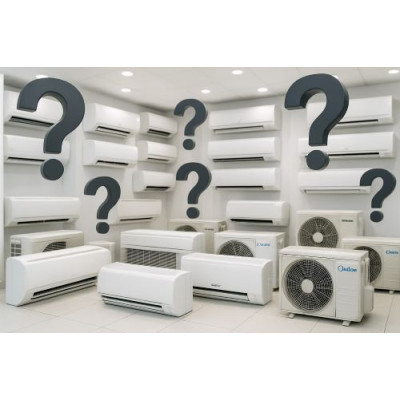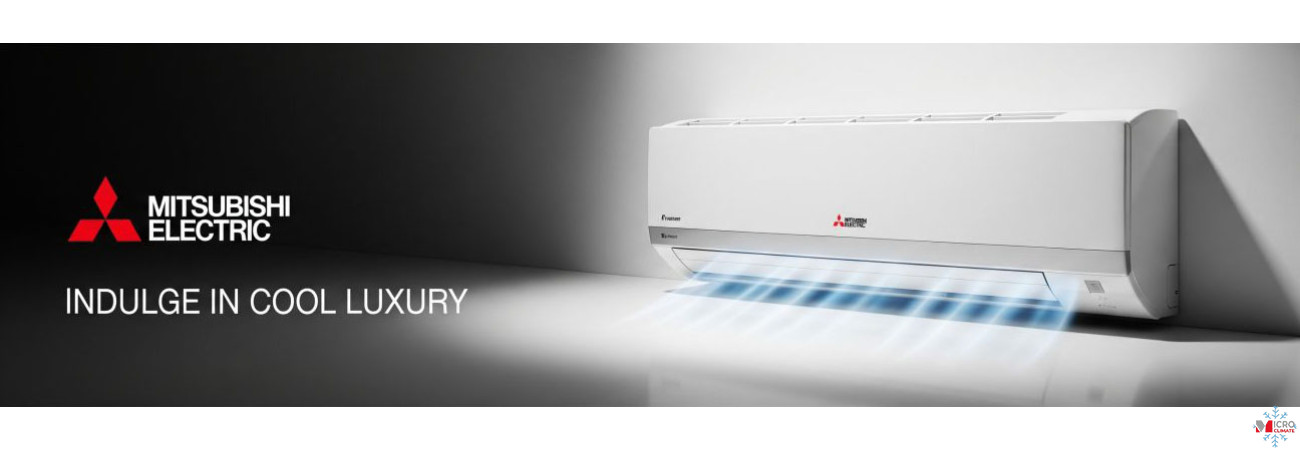
At a Glance
-
Gree and Midea dominate the global air conditioning market, with presence in over 150 countries.
-
Gree is often praised for engineering reliability and long-term durability, while Midea stands out for innovation, design, and value for money.
-
In split systems, Gree focuses on stability and performance; Midea excels in smart connectivity and style.
-
For multi-split installations, both offer efficient inverter systems, but Gree maintains an edge in precision cooling.
-
In the VRF (Variable Refrigerant Flow) category, Midea’s next-generation systems challenge Gree’s premium Gree GMV series in flexibility and energy optimization.
-
Globally, both brands represent the evolution of modern HVAC — balancing technology, affordability, and sustainability.
Introduction: The Global Rise of Two Chinese Giants
Just two decades ago, few could imagine that two companies from Zhuhai and Foshan would redefine how the world experiences indoor comfort. Today, Gree Electric Appliances and Midea Group are not only the world’s largest manufacturers of air conditioners but also key symbols of China’s industrial transformation.
As of 2025, the global air conditioning market exceeds $150 billion annually, with Gree and Midea together accounting for nearly 40% of residential and light commercial sales worldwide. Their products cool homes in London and Los Angeles, power VRF systems in hotels across Dubai, and regulate temperature in offices from Sydney to São Paulo.
Yet the question remains:
Which brand truly delivers better performance, reliability, and long-term value — Gree or Midea?
1. Brand Overview and Global Reputation
Gree Electric Appliances: Engineering Stability
Founded in 1991 in Zhuhai, Gree has built its name on engineering precision and manufacturing self-sufficiency. Unlike many competitors, Gree produces nearly every major component in-house, including compressors and PCB boards. This vertical integration ensures product quality and consistency.
Gree’s reputation rests on three
-
Reliability and Durability — Gree units are often described as “industrial-grade” even in residential settings.
-
Strong After-Sales Support — Global service coverage and spare-part availability.
-
Performance in Harsh Conditions — Particularly in markets with extreme heat or unstable electricity.
Gree operates in more than 160 countries, with factories in China, Brazil, and Pakistan, and exports reaching both high-end and mid-range markets.
Midea Group: Innovation and Adaptability
Midea, founded in 1968 in Foshan, represents a more dynamic, design-driven approach. Known for its wide product range — from appliances to smart home ecosystems — Midea invests heavily in R&D and smart connectivity.
Its brand image combines innovation, affordability, and modern design. Midea’s international partnerships (including Toshiba HVAC, Clivet, and Carrier joint ventures) have expanded its influence in both residential and commercial segments.
Midea operates more than 200 subsidiaries globally, with innovation centers in Japan, Italy, and the United States — demonstrating its commitment to global standards and technological leadership.
2. Split Systems: The Battle for Everyday Comfort
Split air conditioners remain the heart of residential cooling, accounting for over 60% of global AC sales.
Gree Split Systems: Reliable and Built to Last
Popular models: Gree Lomo, Fairy, and Pular series
-
Compressor Technology: Advanced DC inverter compressors for smooth temperature control.
-
Energy Efficiency: Seasonal Energy Efficiency Ratios (SEER) often above 7.0.
-
Durability: Strong anti-corrosion coatings and proven performance in tropical climates.
-
Noise Levels: Whisper-quiet indoor units (as low as 19 dB).
Gree systems are often chosen by consumers prioritizing longevity, stable performance, and simple maintenance over advanced design or app-based control.
Midea Split Systems: Smart, Sleek, and Efficient
Popular models: Midea Mission, Breezeless E, and Xtreme Save
-
Smart Control: Integrated Wi-Fi and voice assistant compatibility (Alexa, Google Home).
-
Design: Sleek, minimalist indoor units suited for modern interiors.
-
Breezeless Technology: Unique airflow system that eliminates cold drafts.
-
Efficiency: Inverter Quattro technology for rapid temperature response.
Midea’s split systems appeal to homeowners who value design aesthetics and smart living without sacrificing performance.
Verdict — Split Systems
-
For rugged reliability and longevity: Gree
-
For smart control, design, and comfort innovation: Midea
In practical terms, both brands are energy-efficient and cost-effective. Gree edges ahead in durability; Midea wins in comfort experience.
3. Multi-Split Systems: Efficiency for Complex Spaces
Understanding Multi-Split Systems
Multi-split systems allow several indoor units to connect to a single outdoor condenser — ideal for offices, apartments, or multi-room homes. These systems require sophisticated refrigerant management and inverter control.
Gree Multi-Split (Free Match Series)
Gree’s Free Match line supports up to 5 indoor units on one outdoor compressor, with flexible configurations.
-
Precision Control: Independent room temperature management.
-
Wide Compatibility: Works with wall, cassette, ducted, and console units.
-
Energy Use: Intelligent load distribution reduces power waste.
-
Maintenance: Modular design for simplified servicing.
Midea Multi-Split (All Easy Pro and Multi Comfort Series)
Midea emphasizes user convenience and installation efficiency.
-
Quick Installation: Patented Easy Pro technology reduces setup time.
-
Smart Management: Centralized app control for multiple rooms.
-
Eco-Efficiency: Advanced refrigerant flow control for improved SEER ratings.
-
Design Flexibility: Indoor units available in multiple finishes.
Verdict — Multi-Split Systems
Both brands deliver solid multi-split options, but with subtle differences:
-
Gree: Best for precise control and high-load reliability.
-
Midea: Best for user experience, smart integration, and installation ease.
In mixed residential-commercial projects, Gree’s Free Match tends to appeal to engineers, while Midea’s Multi Comfort appeals to homeowners.
4. VRF Systems: Competing in the Premium League
VRF (Variable Refrigerant Flow) systems represent the pinnacle of modern HVAC technology, typically used in hotels, offices, and large commercial buildings. These systems allow simultaneous heating and cooling in different zones, providing maximum flexibility and energy savings.
Gree GMV 6 VRF System
Gree’s flagship GMV 6 series is a global benchmark for large-scale applications.
-
Capacity Range: Up to 270 kW.
-
Efficiency: COP values above 4.8, with precise inverter modulation.
-
Refrigerant: R410A and new R32 variants.
-
Technology: 3-core control system for stable, intelligent operation.
-
Applications: Hotels, hospitals, office towers.
Gree’s VRF solutions are trusted in critical environments — where uptime, temperature precision, and system redundancy are essential.
Midea V6 VRF System
Midea’s V6 series is among the most advanced in the market, designed for high energy efficiency and scalability.
-
Efficiency: Up to 6.5 COP under partial load conditions.
-
Capacity Range: Modular units up to 310 kW combined.
-
Refrigerant Management: Advanced oil-balance algorithms extend system life.
-
IoT Integration: Cloud-based monitoring and predictive maintenance.
-
Applications: Commercial buildings, hotels, mixed-use properties.
Verdict — VRF Systems
Both Gree and Midea produce world-class VRF systems, but the distinction lies in focus:
-
Gree GMV 6: Emphasizes long-term stability and industrial-grade performance.
-
Midea V6: Highlights smart monitoring, IoT connectivity, and system scalability.
In short — Gree for engineering reliability, Midea for digital intelligence.
5. Energy Efficiency and Environmental Responsibility
Gree: Sustainable Engineering
Gree invests heavily in green manufacturing, operating solar-powered plants and promoting R32 refrigerant adoption.
-
R&D Focus: Heat-pump technology and ultra-low-GWP refrigerants.
-
Product Example: Gree’s “Ultra Heat” series functions efficiently down to –25 °C.
Midea: Smart Sustainability
Midea’s global strategy focuses on smart homes and sustainable IoT ecosystems.
-
Recognition: Listed in the Forbes Global 2000 and Dow Jones Sustainability Index.
-
Innovation: Energy-saving algorithms and self-learning operation.
-
Design: Compact outdoor units reducing refrigerant volume and installation footprint.
Verdict — Sustainability
Both brands align with modern environmental standards, but Midea currently leads in digital efficiency and lifecycle optimization, while Gree excels in mechanical robustness and production sustainability.
6. Global Market Presence and Customer Trust
-
Gree dominates in Asia, the Middle East, and South America, with strong after-sales infrastructure.
-
Midea leads in Europe and North America, boosted by partnerships and design-driven appeal.
-
Brand Trust: Independent surveys show comparable satisfaction scores — Gree customers cite durability; Midea users highlight ease of use and comfort.
Service Networks
Both brands maintain certified service partners across more than 100 countries. However, Gree’s longer warranty options and spare-part availability provide an extra layer of consumer trust in emerging markets.
7. Innovation and Future Outlook
-
Artificial Intelligence: Midea integrates AI predictive control to learn user habits.
-
Smart Connectivity: Both brands adopt app-based and voice-assistant integration.
-
Global Expansion: Gree focuses on manufacturing localization; Midea invests in R&D centers abroad.
-
Next-Generation Refrigerants: Both companies prepare for R454B and other low-GWP gases to meet future regulations.
In global innovation rankings, Midea consistently ranks among the Top 5 patent holders in HVAC technology, while Gree maintains the largest independent compressor R&D facility in the world.
8. Price and Value Analysis
-
Entry-Level Splits: Midea typically costs 5–10% less than comparable Gree models.
-
Mid-Range: Nearly equal pricing, but Gree often includes extended warranties.
-
VRF Systems: Midea offers modular flexibility at competitive pricing; Gree commands a premium for its industrial design and reliability.
For most consumers, Midea provides better initial affordability; Gree ensures better lifetime value through long-term performance.
9. Expert Opinions and Industry Perception
HVAC professionals often describe Gree as the “engineer’s brand” — straightforward, durable, and proven.
Midea, meanwhile, is the “innovator’s brand”, representing comfort through connectivity and modern design.
Analysts predict both brands will continue to dominate emerging markets, but Midea’s strong R&D in Europe and the US positions it as a global design and technology leader in the next decade.
Conclusion: Gree or Midea — Which One Wins Globally?
Both Gree and Midea embody the evolution of HVAC technology: efficiency, intelligence, and sustainability.
But their strengths differ.
| Category | Winner | Why |
|---|---|---|
| Reliability & Durability | Gree | Heavy-duty design and component control |
| Innovation & Smart Tech | Midea | Smart connectivity, design excellence |
| Split Systems | Midea | Sleek, modern, user-friendly |
| Multi-Split Systems | Gree | Precision and load management |
| VRF Systems | Tie | Gree for stability, Midea for flexibility |
| Sustainability & R&D | Midea | Broader innovation strategy |
| Lifetime Value | Gree | Long-term reliability |
Final Verdict:
If your priority is unmatched reliability and engineering strength, choose Gree.
If you value innovation, smart control, and elegant design, Midea delivers an outstanding experience.
In truth, the world of modern air conditioning doesn’t need a single winner — it needs brands like Gree and Midea pushing each other to innovate, making homes and businesses across the globe cooler, smarter, and more sustainable.




